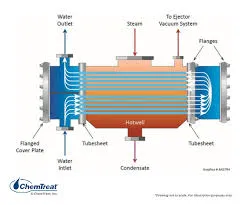Dhj . 19, 2024 13:36 Back to list
Exploring Casting Techniques and Innovations in Aluminum Manufacturing
Casting in Aluminium An Overview of Techniques and Applications
Aluminium casting is a highly versatile process that has become essential in various industries due to the metal's excellent mechanical properties, corrosion resistance, and lightweight nature. From automotive components to aerospace fittings, aluminium castings play a crucial role in modern manufacturing. This article will explore the various methods of aluminium casting, their advantages, and their diverse applications.
Types of Aluminium Casting Processes
1. Sand Casting
Sand casting is one of the oldest and most widely used methods for aluminium casting. In this process, a pattern is created, usually made of wood or metal, and is then surrounded by a sand mixture that acts as a mold. Once the pattern is removed, molten aluminium is poured into the mold cavity. After solidification, the mold is broken apart to retrieve the cast part. Sand casting is economically viable for both small and large production runs and can accommodate complex geometries.
2. Die Casting
Die casting involves forcing molten aluminium under high pressure into reusable steel molds, known as dies. This method enables the production of parts with excellent surface finishes and tight tolerances. Die casting is suitable for high-volume production as it allows for rapid cycle times. However, the initial cost of creating the dies is relatively high, making it more suitable for larger production runs.
3. Investment Casting
Also known as lost-wax casting, investment casting is a precision casting method that provides high dimensional accuracy and intricate detail. A wax pattern is coated with a refractory material that hardens to create a mold. The wax is then melted away, leaving a cavity into which molten aluminium is poured. Investment casting is ideal for small to medium-sized parts that require complex shapes and fine features, making it popular in aerospace and medical applications.
In permanent mold casting, molten aluminium is poured into a reusable metal mold, allowing for better heat conduction and shorter cooling times than sand casting. This process produces parts with high dimensional accuracy and smooth surface finishes. Permanent mold casting is suitable for medium to large production runs and is commonly used in automotive and industrial applications.
Advantages of Aluminium Casting
casting in aluminium

Aluminium casting offers numerous benefits that contribute to its widespread use. Firstly, aluminium's low density combined with its strength makes it ideal for applications where weight savings are critical, such as in the automotive and aerospace sectors. Secondly, aluminium exhibits excellent corrosion resistance, extending the lifespan of cast components when exposed to harsh environments. Additionally, casting allows for more complex shapes and detailed features compared to traditional machining processes, reducing material waste and production time.
Applications of Aluminium Casting
1. Automotive Industry
Aluminium castings are extensively used in the automotive industry for components such as engine blocks, cylinder heads, transmission cases, and suspension parts. The lightweight nature of aluminium helps improve fuel efficiency and reduce emissions, which is vital in meeting modern environmental standards.
2. Aerospace Sector
In aerospace, aluminium castings are crucial for components like aircraft frames, engine parts, and landing gear. The strength-to-weight ratio of aluminium ensures that aircraft can maintain structural integrity while minimizing weight.
3. Consumer Electronics
Many consumer electronic devices use aluminium castings for cases and enclosures due to the metal's aesthetic appeal, durability, and ability to dissipate heat. Laptops, smartphones, and tablets often feature cast aluminium parts that enhance both their design and functionality.
4. Industrial Equipment
In the manufacturing sector, aluminium castings are employed in various machinery and equipment, such as pumps, valves, and compressors. The corrosion resistance of aluminium contributes to the longevity and reliability of these components in industrial applications.
Conclusion
Aluminium casting is a vital manufacturing process that provides a unique blend of performance, versatility, and cost-effectiveness. With several casting techniques available, manufacturers can choose the method that best suits their specific requirements, leading to innovations across various industries. As technology continues to evolve, aluminium casting will likely play an even more significant role in producing lightweight, durable components that meet the challenges of the future.
-
Centrifugally Cast Iron Water Main Pipe | Ductile Iron Solutions
NewsAug.24,2025
-
Durable Cast Steel Concrete Pipe Mold Bottom Rings & Base Trays
NewsAug.23,2025
-
Centrifugally Cast Iron Water Main Pipe for Reliable Mains
NewsAug.22,2025
-
Durable Centrifugally Cast Iron Water Main Pipe
NewsAug.11,2025
-
Centrifugally Cast Iron Water Main Pipes for Reliability
NewsAug.10,2025
-
High-Quality Centrifugally Cast Iron Water Main Pipes
NewsAug.09,2025


